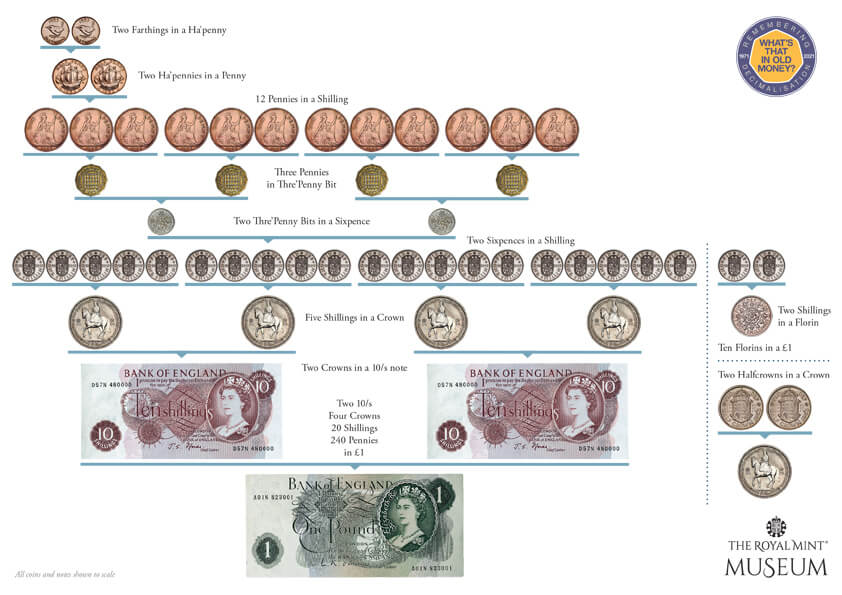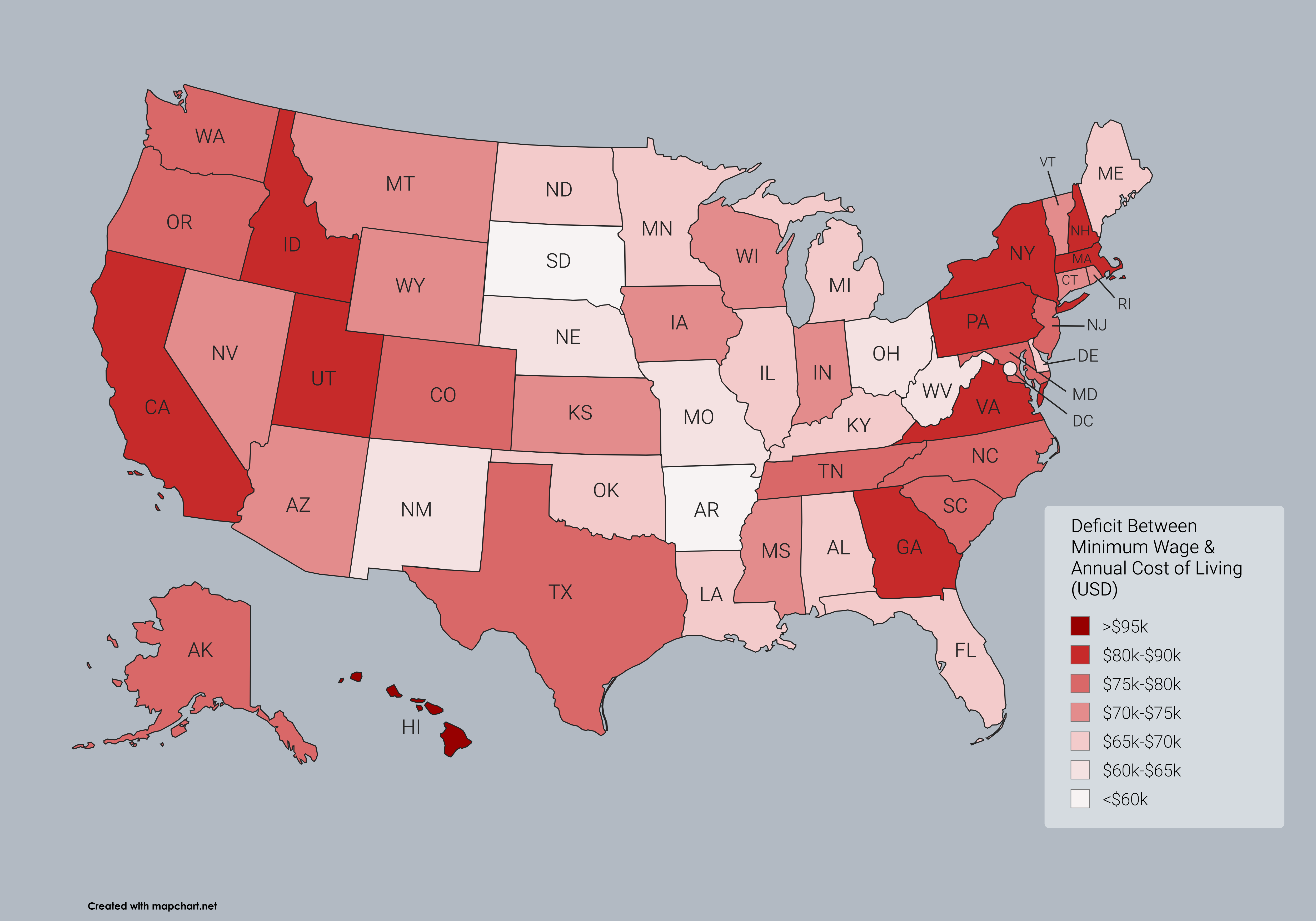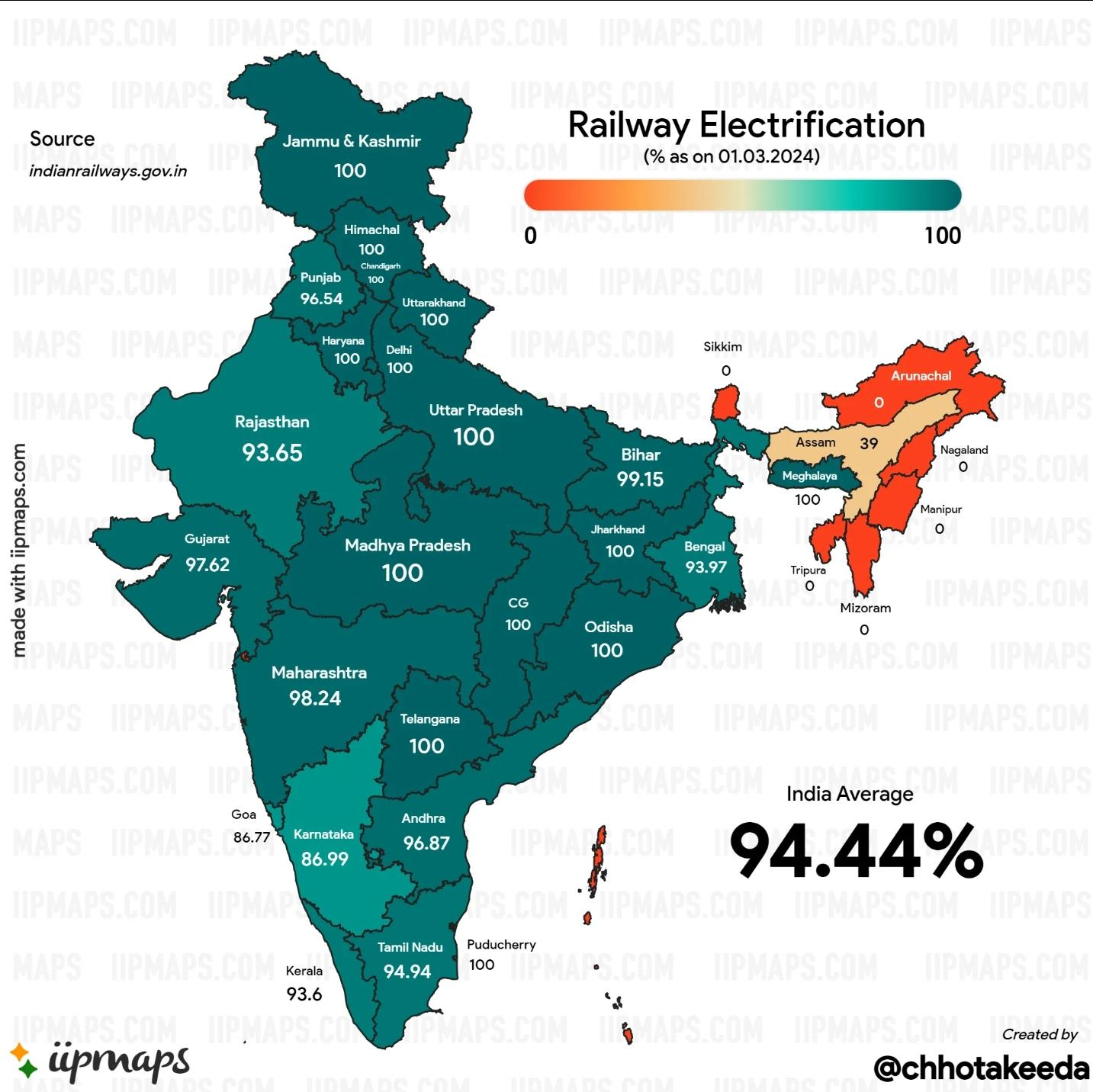Edit: the corrected map is now live
Out of curiosity, I wanted to see what a reasonable federal minimum wage might look like if implemented.
Looking at historical information from a time when a single individual’s income could support a family of four, I settled at the late 1950s.
The minimum wage in 1956 was finally raised to one whole dollar, the equivalent of about $12 today by raw inflation. However, its key to remember that this was an era when women were not paid on par with men, and when children younger than 13 commonly were in the workforce.
So instead I found average wage and salary numbers for 1958. In 1958, the average among all adult male wages was $4,888, and salaried men (doctors, lawyers, etc not included) averaged $6,514. Taking the salary figure and adjusting it for inflation gives you roughly $72k, or close to $35/hr.
If the average person had anywhere near the purchasing power of an individual in 1958, then no one could be making less than $35 per hour for their labor. Effectively, to return people to that level of financial security this is what it would take, while everything would simultaneously have to remain the same price. Meaning this wage increase would necessarily have to come out of the pockets of shareholders/owners.
The map shows quite clearly that even with such a high minimum wage, it would still be unaffordable in 100% of the country on 40 hours of work per week alone.
Trickle down economics have doomed this country on a path toward economic ruin, and have pushed most people in the US to such a precarious point financially that they have no hope of living as comfortably as the average worker in 1958. The average salaried worker today earns just $61k per year, over $10k shy of what the average worker made back in the day. Meanwhile, the cost of goods and services are astronomically higher.
$1 in 1956 bought you 4 gallons of gasoline. I pay $20 for that, even though by raw inflation the dollar is worth $12 today. Although gas is highly influenced by many factors that are unstable.
~~In the late 1950s, a cheap American car cost about $14k. The equivalent of over $168k today by inflation. By average salary, an individual could buy a car within 3-4 years easily by saving intentional for it. At modern wages, this would be impos. At $72k per year it becomes about as feasible as it was back then to reach that $168k mark.~~
These rough concepts are how I landed on $35 per hour as an appropriate measure. As well as the fact that wages today are almost entirely earned by adults, considering modern labor laws and the decline of the teenage workforce.
Edit: I just did the math for funsies, and 72,800 per year is about the appropriate income to afford the median rental price in the US (about $1900 in April 2025) or just shy of the median mortgage price of about $2,100 (also April)


















